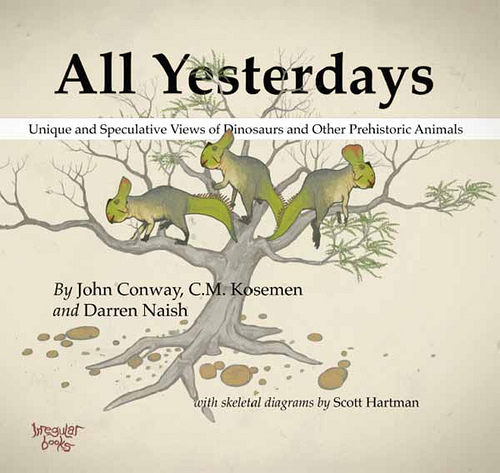I touched on some of the issues of illustration in biology when I read Jean-Baptiste de Panafieu and Patrick Gries’ Evolution, and while that point is largely moot when it comes to everyone’s favorite subjects—dinosaurs—there are points of the argument that are still illuminating. Dinosaurs—any extinct prehistoric animal, really—require interpretation, guesswork and assumptions. The trick is, at some point those assumptions become part of the subculture, turning into an unofficial visual canon. Popular culture plays a role in this, as well; dinosaurs are tremendously inspiring and evocative, so people have strong opinions about them. Opinions unrelated to science. We’ve seen this in the reluctance of scientific illustration to adopt the “feathered dinosaur” motif, just as we had foot dragging on the topic of whether dinosaurs were ectothermic reptiles or “warm-blooded” like birds. All Yesterdays, by Darren Naish, John Conway, C.M. Kosemen and Scott Hartman, takes a look at that cutting edge of speculative paleoart, trying to look at things “outside the box.”
Brightly colored predatory Carnotaurus waving its arms around to attract a mate, long-necked elasmosaurs stretching their necks into the air in acrobatic displays of fitness, an Allosaurus and prey-animal meeting without bloodshed, an herbivore snacking on a giant centipede—some of the illustrations here are predicated on behavioral shifts.
Seeing “action packed” montages, conventional illustrators may have missed quieter scenes and Conway, Kosemen and Naish are explicitly trying to fill in those blanks. These aren’t fringe conspiracy theorists or amateurs, either— Naish is a paleontologist whose credentials you can check out by way of his Scientific American blog, John Conway’s paleo-art speaks for itself, and you may already by acquainted with C.M. Kosemen from his Snaiad project.
Everything behavioral is speculative when it comes to dinosaurs, but we get so used to the “predator jumps prey!” or “herbivore munches leaves!” paradigms that we start seeing those as—well, as the default, while they are just as imaginary as anything else. Also: sleeping T-rex!
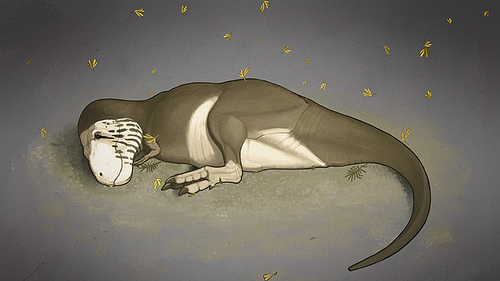
On a personal note, I found the Ouranosaurus to be the most evocative part of the book, but I do really mean that from the narrow window of my own life experiences. See, while I studied anthropology—witness How to Think Like a Neandertal—that included some general anatomy, along the way. One of the musculo-skeletal classes I took had a final that was largely just pictures of skeletons that we were expected to say a few words about. One of them was a creature with long spines on its back—the spinous process, I still remember what that is called—and I knew enough to speculate that it was either a sail or, more likely, a fatty deposit. Showing the Ouranosaurus with a hump rather than a fin validated that college memory.
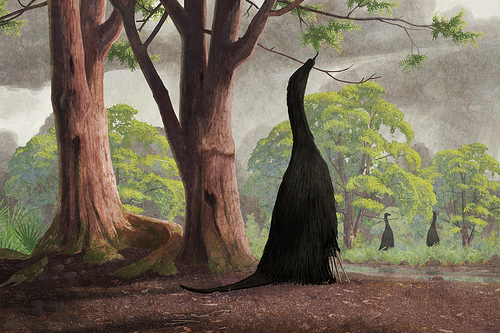
The thing that makes All Yesterdays really stand it are the illustrations, but the writing is on point, as well. Eschewing the academic tone for a conversational one that isn’t self-aggrandizing and isn’t condescending, the summaries for each illustration explain the whys and wherefore behind the artist’s choices. Fuzzy Leaellynasaura with long, flagging tails— why? Therizinosaurus cloaked in feathers with its big claws out of the way as well, resulting in a really striking and almost alien picture. Heterodontosaurus-related fossils have been found with spine-like hairs, and so in its pictures here it is shown covered in quills, or as the authors would have it, they went “whole (hedge) hog.” That sense of humor is a welcome departure from the sometimes dry tone of science non-fiction.
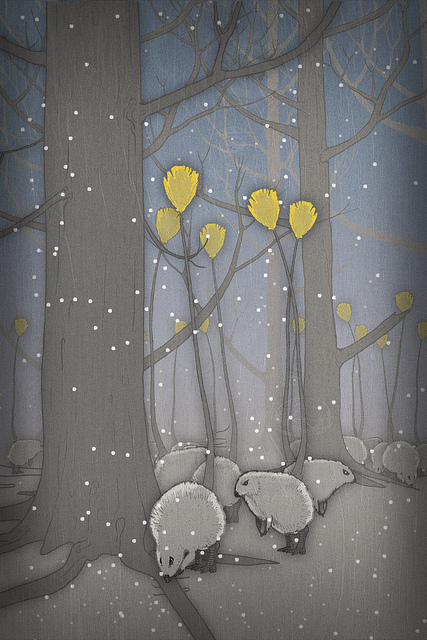
The book ends in a really great thought experiment they call “All Todays”: what if we took the skeletons of existing animals and re-imagined them, using the same logic that we apply to dinosaur fossils? That is, pretend we don’t have anything besides the bones and only a very fragmentary record of skin and muscle—what then? The cat is a good example of this; the distinctive feline face is lost in a reconstruction, as is, for instance, the fat body of a cow. The tusk-like teeth of a hippopotamus—have you ever looked at their skulls?—are cast as evidence of their status as peak predators.
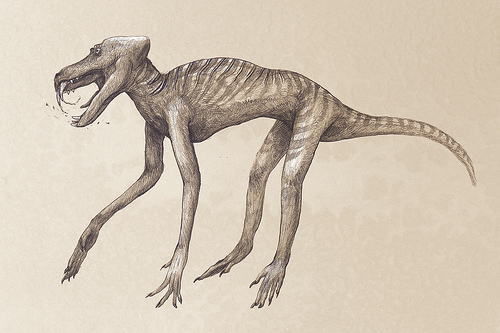
Spider monkeys and baboons are perhaps the eeriest reimaginings; they fall right into the Uncanny Valley, with the authors “supposing” that the grooves in baboon teeth must be evidence of their venomous nature. Birds are another curious case; if you cancel out your knowledge that birds come with feathers and that the vast majority of them fly, you end up with…well, something like strange dinosaurs or pterasaurs. Which brings home the point of the exercise; it is important to recognize the shortcomings of adhering to commonly held wisdom. It is an appeal to Feyerabend; nothing so radical as epistemological anarchism but rather an argument the consistency criterion, a paean to the idea that challenging accepted ideas is good and important—and one of the best ways to advance scientific understanding.
Mordicai Knode’s favorite dinosaur is Deinonychus, and has been ever since he was a very tiny little Mordicai clutching armfuls of dinosaur and fantasy books. Tell him your favorite on Twitter, and find him on Tumblr.










